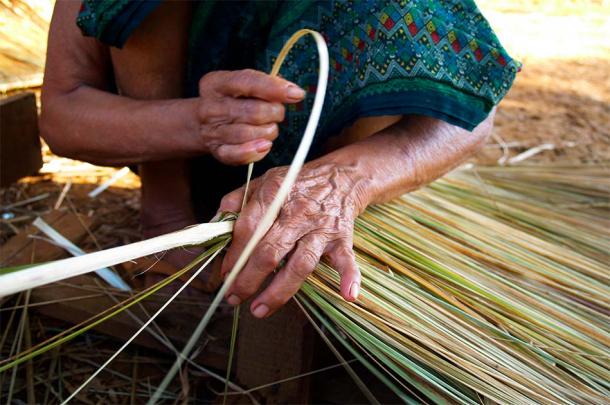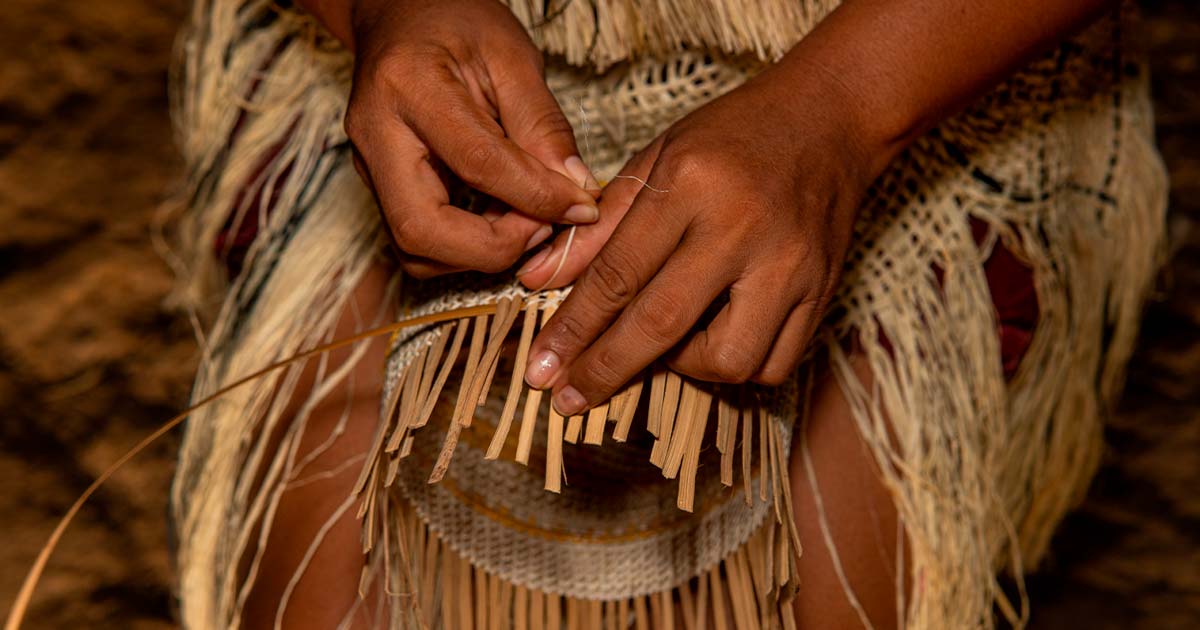Early Humans Were Weaving Baskets in the Philippines 40,000 Years Ago!
Recent examination of ancient stone tools reveals that as early as 40,000 years ago, the early inhabitants of the Philippines were crafting ropes and baskets from plant fibers. This discovery pushes back the timeline for plant-based artifacts in the region by an astounding 31,000 years, as previously the oldest such artifacts were fragments of mats from southern China, estimated to be about 8,000 years old.
Mastering Fibre Technology
According to the study, which was published in the journal PLOS One, researchers analyzed stone tools found in Tabon Caves, situated in the Palawan Province of the western Philippines. Dubbed as the country's "cradle of civilization", Tabon Caves is a site of archaeological importance due to the number of prehistoric human remains found there.
The tools showed microscopic evidence of wear and tear associated with using plant fibers for purposes such as for rope-making and basket weaving. These signs included a brush stroke-type pattern of striations, micro-polish and micro-scars on the surface of the tools, according to a report by Cosmos Magazine.

Tabon Caves, Palawan, Philippines. (Alexcooper1 / CC by SA 3.0)
To understand the ancient plant processing techniques, the researchers studied the practices still employed by indigenous communities in the region. These contemporary communities skillfully extract supple fibers from rugged plants like palm and bamboo for weaving and tying.
Hermine Xhauflair at the University of the Philippines Diliman highlighted the significance of learning fiber technology in human evolution. This technological advancement facilitated the assembly of diverse objects, such as baskets, traps, ropes for houses, bows for hunting, and more. Over time, the development of ropes allowed people to affix sails to canoes, leading to the invention of boats that could travel great distances.
- The Rarely Told Story of Pre-Colonial Philippines
- Butchered Rhino Indicates Much Earlier Human Occupation of the Philippines

Stone tools analyzed in the study. The wear marks show evidence of sawing, splitting, and chopping of plant fibers. (Xhauflair H, Jago-on S, Vitales TJ, Manipon D, Amano N, Callado JR, et al. (2023), Plos One)
Stone Tools and the Age of Bamboo
In contrast to the standardized toolkits found among prehistoric groups in Africa and Europe, stone tools in Southeast Asia exhibited a diverse range of sizes and shapes. This variation may be attributed to environmental adaptations that sparked an "Age of Bamboo." Just as the Stone Age and Bronze Age were defined by their predominant use of stone and bronze respectively, it is probable that tools during this era were primarily crafted from the abundantly available bamboo, reports The New Scientist.
“The study is intriguing as it opens the door to investigating aspects of past human behavior that is typically not preserved in archaeological sites,” said Ben Shaw at the Australian National University. “Even though the plant remains are long gone, [the team’s] detailed approach has made them visible by looking at the tools used to process them.”

A woman in the Philippines using traditional weaving methods. (MICHEL / Adobe Stock)
Pushing Back the Timeline
The authors of the study indicate that the discovery significantly extends the timeline of fiber technology in Southeast Asia.
“The technique used nowadays to process plant fibers in the region was already known 39,000 years ago. Are we in [the] presence of a very long-lasting tradition?” Xhauflair concludes and enquires. “Or was this technique discovered at several points in time and abandoned?”
This groundbreaking study not only sheds light on the ancient fiber technology in Southeast Asia but also underscores the enduring ingenuity of past societies in adapting to their environments. The evidence of sophisticated plant processing techniques and the utilization of bamboo resources offers valuable insights into the lives and cultural practices of early human populations in the region.
Top image: Basket weaving. Source: pinzonoob / Adobe Stock.
By Sahir Pandey
References
Baisas, L. 2023. Damage on 39,000-year-old tools may reveal a prehistoric ‘Age of Bamboo’. Available at: https://www.popsci.com/science/plant-tools-philippines-prehistoric/.
Sagar, S. 2023. Stone tools in Filipino cave were used to make ropes 40,000 years ago. Available at: https://www.newscientist.com/article/2380684-stone-tools-in-filipino-cave-were-used-to-make-ropes-40000-years-ago/.
Yazgin, E. 2023. Microscopic evidence of plant technology in Philippines 39,000 years ago. Available at: https://cosmosmagazine.com/history/archaeology/philippines-stone-tools-plant-technology/.
Xhauflair, H. 2023. The invisible plant technology of Prehistoric Southeast Asia: Indirect evidence for basket and rope making at Tabon Cave, Philippines, 39–33,000 years ago. PLoS One, 18 (6). Available at: https://doi.org/10.1371/journal.pone.0281415.

















